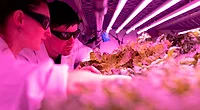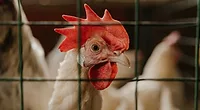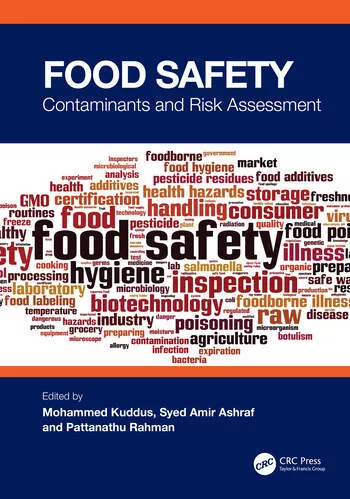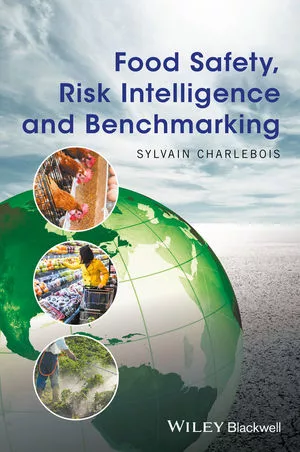Food Safety Heats Up: Changing Temperatures and Food Risk Impacts

Credit: Phoenix Han (phienix_han) via Unsplash
Tracking environmental temperature changes for their impacts on food safety is increasingly important, as just a few degrees of change will shape how food risks develop and unfold, according to recent research.
At a recent Institute for the Advancement of Food and Nutrition Sciences (IAFNS) conference, a presentation on the study, "Climate Change will Increase Aflatoxin Presence in U.S. Corn"1 was given by Dr. Felicia Wu, a Distinguished Professor of Food Safety, Toxicology, and Risk Assessment at Michigan State University.
Aflatoxin is a mycotoxin that presents major food safety risks in the U.S. Corn Belt—and IAFNS welcomed the presentation as an effort to get our collective arms around crop health and food safety concerns in a changing environment.
Aflatoxin is a type of mycotoxin that is produced by the fungi Aspergillus flavus, which thrives in warm, dry climates. "The populations that are most vulnerable [to aflatoxin] are people who live in warm climates where tree nuts, corn, and spices are staple foods," according to Dr. Wu, who co-authored the study.1The paper appears in the open-access journal Environmental Research Letters. Currently, the regions most affected are sub-Saharan Africa, Southeast Asia, Central America, and the U.S. South, according to the author's conclusions.
Aflatoxin poses liver cancer risks, and is "the most potent, naturally occurring human carcinogen," Wu explained. Approximately 100,000 cases of liver cancer are caused by aflatoxin per year, and acute cases can occur at high doses. Additionally, aflatoxin can impact child development, cause stunting, and affect immune function—all serious health concerns.
Dr. Wu explained that as the U.S. Food and Drug Administration (FDA) regulates aflatoxin, it has determined that aflatoxin poses more economic harms than food safety risks in the U.S. at this juncture. However, she warned that near-term climate change creates uncertainty around the level of risk that aflatoxin will pose to U.S. produce in the future. For example, unlike some other mycotoxins, A. flavus does not respond well to fungicides and other mitigation tools.
The study1 focuses on where aflatoxin will be a problem in U.S. corn in 2031–2040 and tapped farmers' crop insurance claims, along with environmental data. To project forward, the team developed a model of aflatoxin risk as a function of temperature, rainfall, and grower practices and tracked historical data for each category.
Looking for quick answers on food safety topics?
Try Ask FSM, our new smart AI search tool.
Ask FSM →
Aflatoxin problems arise during the "silking" phase as corn grows and the yellow strands develop, as well as during the "denting" phase as some kernels split open. The fungus moves through the silks (the yellow stringy part that is removed when shucking). It can also enter the kernels through dents or splits as the corn grows.
The bottom line of Dr. Wu's research is that aflatoxin risk will intensify in the Midwest in the near future, certainly from 2031–2040. Aflatoxin problems are likely to be the most intense in Kansas and Missouri, with a smaller but still significant increase in the main Corn Belt states of Iowa, Illinois, and Nebraska.
Interestingly, as risks shift northward, they leave some areas behind. Due to the northward shift in the temperature belt, aflatoxin risk will decrease in Texas as the state grows too hot for the fungus to survive.
When queried about options to address aflatoxin risks, Dr. Wu advocated for broader use of biotechnology, such as CRISPR gene editing, to produce more resilient breeds of corn.
IAFNS welcomes this analysis, as it used rigorous modeling and analysis to address how food safety and environmental trends are intertwined. For example, IAFNS also supports aflatoxin in corn research2 given the importance of maintaining safe corn yields to provide ingredients for many foods.
IAFNS addresses other biological contaminants by supporting research on waterborne pathogens. Researchers at North Carolina State University examined the emergence, potential routes of contamination and proliferation, as well as virulence and susceptibility of three major foodborne pathogens in the freshwater supply including Salmonella, Listeria and Campylobacter.3
Dr. Wu's analysis also lends itself to a number of other sectors such as commodity production, seed development, and grower practices. Risk evaluations such as these draw on multiple disciplines to creatively generate and mobilize knowledge. These types of findings support decision-making across sectors such as universities, industry, and government. New knowledge on aflatoxin and corn benefits growers, processors, researchers, producers, and U.S. Department of Agriculture (USDA) extension specialists, among others.
The authors went to some length to incorporate a variety of climate model projections into their work to support their evidence and findings and flesh out uncertainties. They relied on over 15 different climate scenarios in conducting the study. This and other research shows how food safety and environment intertwine to pose unique risks and opportunities. Only by acknowledging and addressing potential risks in advance can we reap the rewards of prevention. In this example, Dr. Wu and her colleagues have outlined a path toward safe corn.
- Yu, Jina, David A. Hennessy, Jesse Tack, and Felicia Wu. "Climate change will increase aflatoxin presence in U.S. Corn." Environmental Research Letters 17, no. 5 (April 25, 2022). https://iopscience.iop.org/article/10.1088/1748-9326/ac6435.
- Cheng, X. and M. J. Stasiewicz. "Evaluation Of The Impact Of Skewness, Clustering, And Probe Sampling Plan On Aflatoxin Detection In Corn." IAFNS Risk Analysis. March 17, 2021. https://iafns.org/publication/evaluation-of-the-impact-of-skewness-clustering-and-probe-sampling-plan-on-aflatoxin-detection-in-corn/.
- Harris, A. R., E. N. Fidan, N. G. Nelson, et al. "Microbial Contamination In Environmental Waters Of Rural And Agriculturally-Dominated Landscapes Following Hurricane Florence." ACS EST Water 1, no. 9. (August 23, 2021). https://pubs.acs.org/doi/10.1021/acsestwater.1c00103.







